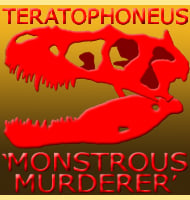Notatesseraeraptor
In Depth Notatesseraeraptor is a genus of theropod dinosaur that lived in Europe during the late Triassic. Notatesseraeraptor has had several parts described in three Master’s thesis, but was not formally named as a distinct genus until 2019. Further Reading - The Axial and Appendicular Morphology of the First Theropod Skeleton (Saurischia, Dinosauria) of Switzerland … Read more
